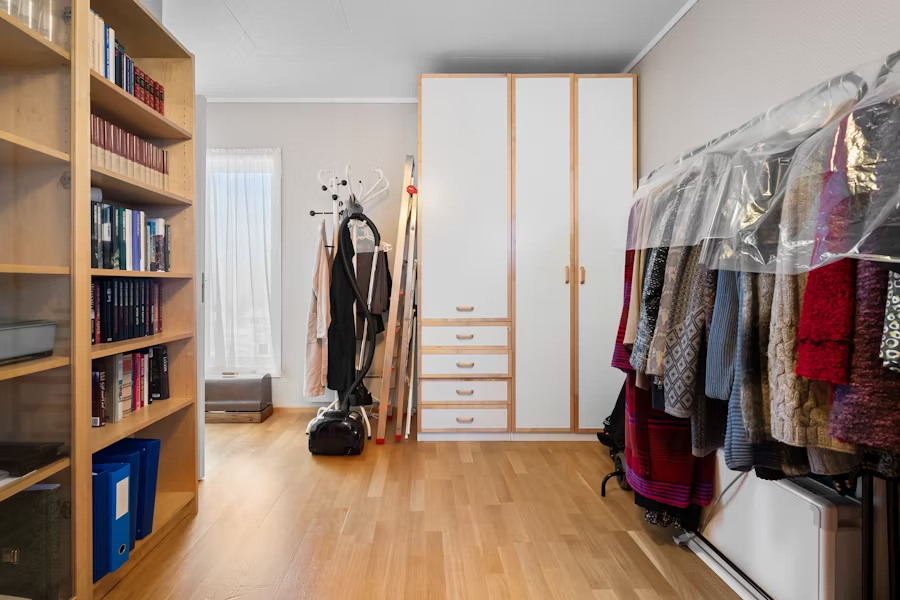Strategies for Designing Homes That Keep Up with Changing Needs

Designing homes that keep up with changing needs is essential in our ever-evolving world. Whether it’s accommodating a growing family, supporting remote work, or planning for aging in place, your home should be flexible and adaptable. In this article, we’ll explore strategies like flexible layouts, multi-functional furniture, and future-proofing techniques to ensure your home can evolve with you.
Embracing Flexibility in Home Design
Embracing flexibility in home design is key to ensuring your home can adapt to various needs over time. Incorporating flexibility allows homes to serve multiple purposes and adapt to changes such as growing families, home offices, and aging in place.
Popular design features for flexibility include open floor plans, sliding walls, and smart technology, which allow for multifunctional and convertible spaces. Adaptable living spaces can meet various lifestyle demands, making them crucial for modern homeowners.
Open Floor Plans
Open floor plans enhance adaptability by:
- Minimizing walls and barriers, allowing easier customization for different activities.
- Facilitating ease of circulation.
- Allowing spaces to serve multiple purposes, such as a guest bedroom functioning as an office or gym.
Adjustable partitions, sliding barn doors, and retractable walls further enhance flexibility, allowing spaces to expand or contract as needed. These elements create flexible living areas that can adapt to various family needs over time.
Multi-Functional Furniture
Modular furniture adapts to changing needs, offering flexibility for various living situations. Examples include:
- Sofa beds
- Dining table that doubles as a workspace
- Storage ottomans
- Built-in fold-away desks
- Murphy beds
These pieces maximize space efficiently, enabling multifunctional use.
Modular furniture with storage capabilities can be effectively used in flexible layouts to maximize usability and enhance functionality in limited spaces.
Flexible Layouts
Movable partitions in home layouts allow quick and easy reconfiguration of spaces. Sliding or pocket doors facilitate rapid room transformations, ideal for flexible home design.
For those looking to downsize or explore flexible alternatives, considering a motor home for sale in Australia is a practical and increasingly popular solution. These mobile homes offer the comfort of a house with the freedom to move.
Planning for Future Needs
Designing homes with future needs in mind ensures they remain relevant and functional as family needs change over time. Thoughtful design choices can make a home a sustainable investment, accommodating both current and future lifestyle requirements.
Considering current and future family needs makes homes adaptable to lifelong changes, reducing renovation costs and enabling longer residence.
Universal Design Principles
Universal design principles feature wider doorways, zero-step entry, and lever-style door handles to ensure accessibility for everyone. Adding these elements early in construction results in a more visually consistent and efficient home than making modifications later.
Accessibility features include adjustable countertops, sufficient lighting, and a strategic structure layout of vital systems like plumbing and electrical, accommodating diverse needs over time.
Adaptable Structural Elements
Open concept layouts facilitate easier movement and accommodate wheelchairs in multi-generational households. Features like wheelchair ramps and stair lifts significantly enhance a home’s future accessibility with mobility aids.
Wider framing bays in homes increase adaptability for future modifications, enhancing structural flexibility.
Future-Proofing Key Areas
Key areas like kitchens and bathrooms should be prioritized in any long-term plan. Functional renovations in these spaces improve comfort and usability for all ages. A great example is engaging professionals for kitchen renovations in Melbourne, a city where homeowners often seek both practicality and style in their upgrades.
Creating Separate Living Spaces

Creating separate living spaces in a home accommodates financial pressures and evolving family needs. Effective design in multi-generational homes prioritizes privacy for each member while encouraging interaction in shared spaces that were created for this purpose.
Homes should include private suites or en-suites for independence and communal areas for family bonding.
In-Law Suites and Granny Flats
In-law suites or granny flats give elderly family members and extended family members independent living spaces while keeping them close to the main household. This design promotes privacy and independence, allowing elderly family members to maintain their lifestyle while staying close to family support.
Simple updates like fresh paint or new fixtures can dramatically enhance the appearance and usability of a multi-generational home without significant investment.
Dual-Key and Attached Homes
Dual-key homes let two families live together while maintaining private spaces for people living in multi-generational arrangements. These homes are ideal for multi-generational living, allowing each family unit to have an independent area while being part of the larger household.
This setup provides flexibility and convenience, ensuring family members can enjoy both privacy and communal living as needed.
Private Entrances and En-Suites
Private entrances in multi-generational homes facilitate individual access and enhance overall privacy. Private en-suites contribute to a sense of independence and comfort for family members.
These features are beneficial in homes with elderly parents or adult children, allowing them to maintain privacy while being part of the main household.
Enhancing Shared Spaces
Enhancing shared spaces promotes family interaction and creates a harmonious living environment. Multifunctional spaces boost a home’s appraisal value by increasing its appeal to potential buyers.
Open floor plans enhance adaptability by reducing barriers, allowing for customized areas for various activities. Furniture that serves multiple purposes maximizes space efficiency, especially in homes with limited square footage and multiple floors.
Family Rooms and Living Rooms
Family rooms should feature open layouts that facilitate easy movement and conversation for guests. Flexible seating arrangements accommodate various activities and promote togetherness.
Simple updates like fresh paint or new fixtures significantly enhance the functionality and aesthetics of shared spaces and common areas without major renovations.
Kitchens as Social Hubs
Kitchens act as accessible spaces that promote social interaction among family members. Multiple tables and seating areas create a welcoming environment for gatherings and family meals.
Open layouts and ample seating in kitchens encourage family bonding, making the kitchen a central hub for social activities.
Outdoor Living Spaces
Versatile outdoor spaces can host various family activities, from dining to relaxation. Outdoor areas should include modular furniture that offers flexibility for multiple functions and decor.
Elements for different age groups, such as play zones for kids and quiet spaces for elders, ensure outdoor spaces can be enjoyed by all family members, highlighting the difference in needs across the family and their life stages.
Maximizing Storage Solutions

Designated storage zones help maintain order by categorizing items based on purpose. Innovative storage solutions enhance living spaces by utilizing vertical areas with wall-mounted shelves and hooks.
Smart storage solutions optimize space and ensure organization in adaptable homes. These strategies save space and improve the overall functionality of the home, accommodating changing needs.
Built-In and Hidden Storage
Built-in storage enhances a home in several ways:
- Enhances both functionality and visual appeal
- Custom cabinetry and hidden compartments integrate with home aesthetics, keeping spaces tidy
- Hidden storage compartments reduce clutter while maintaining a streamlined home environment
Built-in and hidden storage options maintain a clean and functional aesthetic in a home.
Modular Storage Furniture
Modular storage furniture offers flexibility and adaptability for changing storage needs. These pieces can be rearranged to adapt to varying storage needs.
Modular storage pieces adapt to evolving family dynamics, allowing reconfiguration to accommodate different needs.
Integrating Technology for Modern Living
Technology integration in home design streamlines daily tasks and enhances overall quality of life for residents. Smart home technology enhances daily living by increasing efficiency and comfort.
Multi-generational households benefit from smart home solutions that enhance convenience and ease of living.
Smart Home Systems
Climate control systems allow personalized comfort settings for different areas of the house. A custom home with customizable smart home hubs and user profiles provides tailored experiences for different family members, addressing diverse needs.
Smart home systems enhance convenience, security, and comfort in daily living. Implementing smart home systems results in a more comfortable, secure, and efficient living environment.
Communication Tools
Built-in intercom systems offer a convenient way for family members to communicate across different areas of the home. Effective communication tools facilitate interaction between family members in modern homes.
In multi-generational households, these tools maintain harmony by ensuring easy connection for everyone. Integrating communication tools into home design promotes better coordination and enhances the overall living experience for all residents.
Practical Renovation Tips
Practical renovation tips significantly enhance comfort and functionality in homes, and sharing financial burdens like mortgage and utilities can make all the difference by reducing individual costs.
Prioritizing key areas and working with professional designers ensures successful and cost-effective renovations for clients.
Prioritizing Key Areas
Renovating key areas like kitchens dramatically improves usability and lifestyle in homes. Trends in kitchen updates reflect homeowner needs, making these spaces more functional and appealing.
Renovating bathrooms alongside the kitchens is equally important for maximizing comfort.
Working With Professional Designers
Hiring professional interior designers ensures successful renovations through their expertise in interior design. Professional designers use their industry knowledge to optimize space and functionality in homes. For instance, kitchen renovations in Melbourne exemplify quality local renovation services.
Engaging professional designers provides long-term benefits, including improved aesthetic and functional value of the designer’s home.
Cost-Effective Updates
Focusing on renovations in key areas like kitchens and bathrooms significantly improves functionality without extensive costs. Working with professional designers ensures cost-effective updates that meet evolving household needs.
Smart home technologies streamline daily routines, making homes more efficient and adaptable. Efficient storage solutions, like built-in and modular options, optimize space and keep homes organized.
Efficient Logistics and Deliveries

Reliable delivery services are essential for modern homes, facilitating timely access to goods and services. Choosing trusted delivery providers enhances household convenience by ensuring the prompt arrival of necessary items. Efficient logistics significantly reduces household stress, improving residents’ quality of life.
Dependable Delivery Services
Timely deliveries are crucial for maintaining home efficiency. Partnering with reliable logistics providers like DHL ensures that appliances, tools, and essential supplies arrive when needed, reducing stress and keeping your projects on track.
Impact on Home Life Efficiency
Efficient logistics help alleviate stress in daily life by ensuring that essential items arrive when needed, enhancing overall household efficiency. Timely deliveries from efficient logistics can significantly reduce daily stress for families, allowing for smoother household operations.
Dependable logistics providers improve home life efficiency.
Practical Solutions for Everyday Maintenance
Regular maintenance tasks can prolong the life of essential home systems, including HVAC, plumbing, and electrical. Regular home maintenance is crucial for ensuring long-term functionality and comfort.
Implementing regular maintenance practices not only enhances home durability but also contributes to overall comfort for residents.
Common Repairs
Frequent repairs in homes often include fixing leaky faucets, patching drywall, and addressing worn-out flooring. Addressing these common repairs can enhance the longevity and comfort of the home. Regular maintenance helps prevent more costly repairs in the future, protecting the homeowner’s investment.
Reliable Service Providers
When something breaks, having a trustworthy technician is essential. For example, a dependable Warana plumber can quickly resolve plumbing concerns and prevent further damage. Choosing the right professionals ensures long-term peace of mind.
Summary
Designing homes that keep up with changing needs is essential due to lifestyle changes, family growth, and new trends. By embracing flexibility in home design, planning for future needs, creating separate living spaces, enhancing shared spaces, maximizing storage solutions, integrating technology, and following practical renovation tips, homeowners can ensure their homes remain functional and comfortable for years to come.
Remember, home improvement and lifestyle changes are an ongoing journey. By integrating these strategies, you can create a home that adapts as your life evolves, providing a sanctuary that meets your needs and those of future generations.






